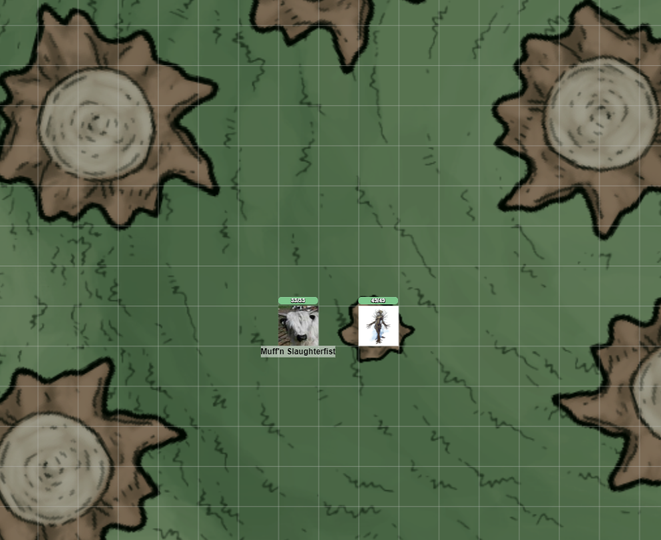
Path of the Mutant
Tabletop
Non-Academic
Solo
2 Days
Core Tasks:
-
Create an ability kit to reinforce a theme
-
Design engaging abilities that are easy to use
-
Balance a table to provide engaging variance
Shipped: 5/29/24
Written: 10/4/24


Overview
Path of the Mutant is a D&D ability kit I created for the Path System in my homebrewed D&D campaign. Designing ability kits has always been a passion of mine, so I created the Paths system to create the opportunity to make some for my friends. This particular Path was for a Hermit Minotaur Druid named Muff'n, centered around volatility, abominations, and embracing chaos. I worked to create a kit that supported the character's storyline, and was as enjoyable as possible for the player I was making it for. This project gave me great practice working with an existing system to deliver a new, engaging experience.
What are Paths?
The path system is an extension of D&D's subclass system, providing even further specialization. Each Path is curated for each character by the DM, and ties into their individual stories. During the campaign, players can run into character specific, scripted narrative events, where they're required to make a choice. This choice lets the player decide between two Paths, giving them some agency in their decision.
This system is designed to highlight individual character moments, pushing them to develop and become more complex, and reinforce these developments through changes in their character's abilities.


Context
For this ability set, there were a few things I had to keep in mind. First, the player was new to D&D. This meant that regardless of what I made, I needed it to be easy to use and understand. I also needed it to fit the player's desired playstyle, while still putting a twist on it. I wanted to make sure I didn't uproot the way the player wanted to play the game with something radically different. They seemed to like their druid abilities, specifically running into combat recklessly in wild shape, so I tried to keep that in mind.
Combat Identity
When creating the kit, I started by defining the Themes and Combat Identity. I decided to base this kit off of my setting's Goddess of Affliction, which had a sort of mad scientist secret keeper theme. I derived themes of volatility, a lack of control, and embracing chaos as the core of the Path. To compliment this, I went with a heavy burst combat identity, leaning on an extreme surge of offensive and defensive capabilities, at a steep cost. This all coalesced as a kit surrounding the idea of a mutant, shapeshifting beast, becoming an amalgamation of deadly creatures.


Mechanics
I designed the kit's mechanics to center around a single, active ability, allowing me to pack all of the kit's power into one punch. This ability, called Mutant Form, is activated in place of Wild Shape, transforming the character into a randomized amalgamation of three creatures from a table. Each creature on the table modifies the Mutant Form's stats, granting health, AC, movement, and various abilities to be used on the player's turn. While in this form, the player looses one wild shape charge per turn they're in the form, and when they run out, they crash, becoming defenseless for one round.
Dynamics
These mechanics strive to create a dynamic where the player has a very powerful 'button' to hit, with depth and more importantly randomness to make it highly engaging, while keeping it quite easy to use. The randomness of the creatures on the table also strives to harmonize with the themes of chaos and volatility, tying the kit to the narrative.


Designing the Table
When designing the creatures themselves, I took to a spreadsheet to balance each potential option. I strove to create variability in both the influence of each creature, and its total power. I targeted eight creatures in total, with two 'low roll' creatures, five 'standard' creatures, and one 'jackpot' creature. I used a point system to quantify the value of each stat, attack, and passive, and used the totals to balance the value of each creature to fit the targets above. I also went in and created sub-tables to expand the pool a bit, allowing a bit more variation and utilizing duplicate ideas I had for the same creature type.
How'd it Go?
Overall, the Path of the Mutant was well received. The player took a try or two to understand how to best utilize the ability, and learn it's consequences, but became comfortable with the best times to 'hit the button'. They became very excited at every chance to roll the dice and see what new creature they got to blast their foes to pieces with, and enjoyed both the mindlessly strong power that the kit provided, and the strategy of finding the best place to crash.
It didn't all go perfectly though, the kit's high peak potential allowed players to high-roll on boss fights and win extremely quickly. This unfortunately happened twice, with players cleaning up 8 round boss fights in 2-3 turns, with a very fortunate combination of Red Dragon's Breath high rolls, back-to-back Rogue sneak attack crits, and Paladin Smites. On top of this, the kit's high variability made it difficult to balance combat encounters. Even if I balanced to the middle, the variability of the Mutant Form table, combined with D&D's already highly variable nature made it reasonably likely that a slippery slope of bad luck could end in a team wipe.
Ultimately, this experience gave me great practice going through the kit design process, and while some issues arose, the player had a great time with their kit and character, and that's all that matters in the end.



